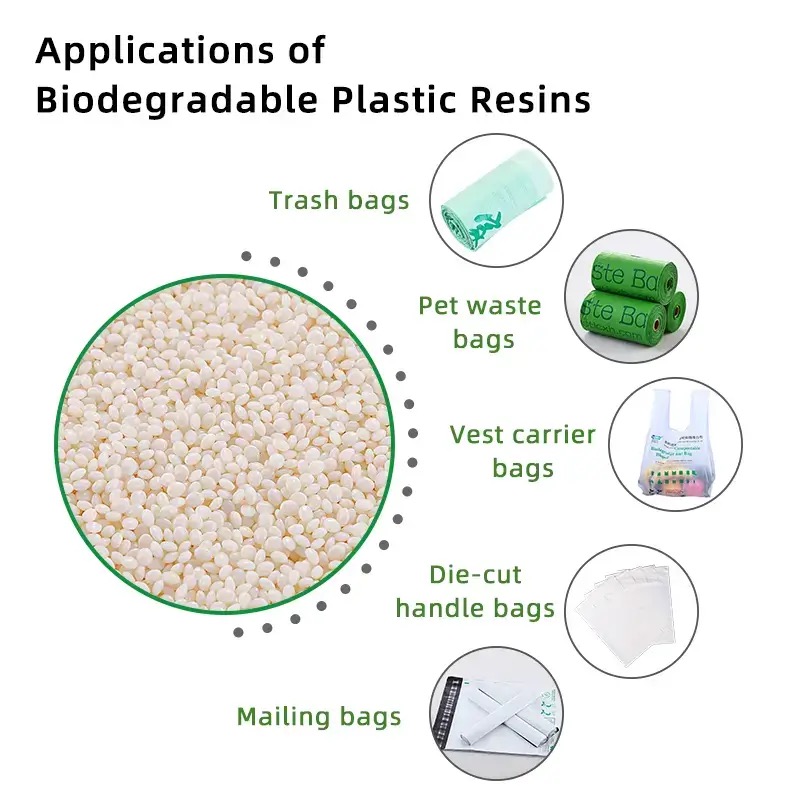As the world shifts away from petroleum-based plastics, you’ve likely heard of bioplastics. But what exactly are they? Are they really better for the planet? And can your business benefit from using them?
This guide breaks it down in plain language—no jargon, no greenwashing—just facts and practical info to help you decide.
🌿 What Are Bioplastics, Really?
Bioplastics are a group of materials made from natural and renewable sources, like corn, sugarcane, cassava, or even algae. Unlike traditional plastics, which come from fossil fuels, these plant-based plastics aim to lower our impact on the environment.
Some bioplastics also have the ability to decompose under the right conditions. This makes them a popular choice for businesses seeking sustainable packaging solutions.
🧪 How Are Bioplastics Made?
The production of bioplastics starts with raw materials such as corn starch or sugarcane. Manufacturers convert these into simple sugars, then use heat or natural fermentation to create building blocks known as polymers.
These polymers are processed into packaging materials like:
- Compostable mailers
- Food wrap and cling film
- Cosmetic pouches
- Shopping bags and trash liners
- Rigid containers and trays
Companies use machines to shape and print these materials into the final product, often with custom logos and sizes.
🔍 Types of Bioplastics Explained
Not all bioplastics are created equal. Some come entirely from plants, while others combine plant-based and fossil-based ingredients. Likewise, some break down in home compost bins, while others need industrial facilities.
Here’s a quick breakdown:
| Type | Plant-Based? | Breaks Down? | Common Uses |
|---|---|---|---|
| PLA (polylactic acid) | ✅ Yes | ✅ Yes (requires heat) | Mailer bags, food trays |
| PBAT | ❌ No (oil origin) | ✅ Yes (in compost) | Mixed with PLA for softness |
| PHA | ✅ Yes | ✅ Yes (home composts) | Premium eco products |
| Bio-PE | ✅ Yes | ❌ No | Same use as plastic PE, just plant-based |
✅ Tip: Always look for certifications like OK Compost, BPI, or TÜV Austria to confirm compostability.

♻️ Are Bioplastics Better Than Traditional Plastics?
Yes, but with some important details.
Bioplastics help reduce our reliance on fossil fuels and carbon-heavy processes. They can cut greenhouse gas emissions, especially when produced using waste crops or energy-efficient systems.
However, not all plant-based plastics are compostable or recyclable. Some need special conditions to break down—such as high heat or controlled moisture.
So while bioplastics are more eco-friendly, they’re not a one-size-fits-all solution. That’s why understanding the different types is so important.
📦 Real-World Uses of Bioplastics in Packaging
You can now find bioplastic products in almost every industry. Here are some examples:
- E-commerce: compostable shipping mailers
- Retail: plant-based shopping bags
- Food & Beverage: compostable coffee lids, straws, and cutlery
- Health & Wellness: sample sachets and refill pouches
- Office Supplies: biodegradable phone cases and pens
Businesses aiming to reduce plastic waste are increasingly choosing plant-based packaging blends like PLA + PBAT, or compostable starch materials.

✅ Why Use Bioplastics in Your Brand?
Switching to bioplastics sends a strong message: your brand cares about the planet.
Whether you’re a startup or an established company, using plant-based alternatives can help:
- Meet new government packaging laws
- Reduce long-term waste and emissions
- Improve your sustainability ratings
- Win loyalty from eco-conscious consumers
With more global bans on single-use plastic coming into effect, now is a good time to explore renewable options for your packaging.
📢 Need Compostable Bags or Packaging?
At hemcbags.com, we help brands replace harmful plastic with better options. Our products are:
- Made from PLA, PBAT, or plant starch
- Certified compostable in Europe and North America
- Custom-made to your size, thickness, and color
- Shipped globally with fast lead times
Whether you need 5,000 or 500,000+ units, we can help your packaging go green.
❓ Frequently Asked Questions (FAQ)
Q1: Are bioplastics and biodegradable plastics the same?
A: Not always. Bioplastics are made from plants. Biodegradable plastics can come from oil or plants, but still break down over time.
Q2: Will bioplastics break down in nature?
A: Some do, especially PHA. Others like PLA require industrial composting. Always check certifications.
Q3: Can I recycle bioplastics?
A: Most bioplastics cannot go in regular recycling. Composting is the preferred disposal method for certified products.
Q4: Do bioplastics smell or feel different?
A: No—most look and feel like regular plastic, but they’re lighter and decompose when handled properly.
Q5: How do I choose the right bioplastic for my product?
A: Think about what matters most—cost, compostability, home vs. industrial breakdown, or customer demand. We can help advise based on your product and volume.
📌 Summary
What are bioplastics? Bioplastics are plant-based alternatives to plastic, made from renewable resources like corn or sugarcane. Some types break down in compost, while others mimic plastic but with lower emissions. Brands use bioplastics for bags, containers, mailers, and more as part of their eco-friendly strategy.

